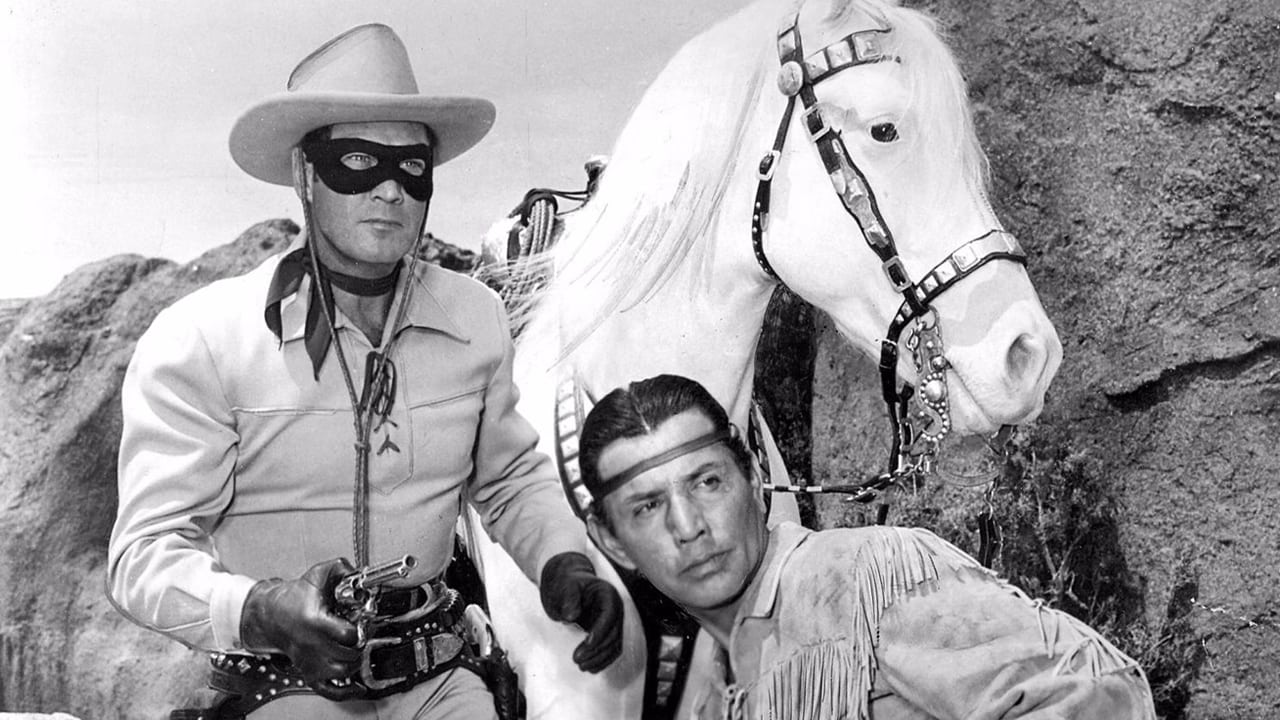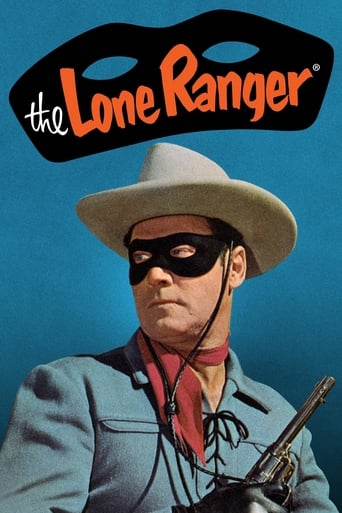

There was a time, from my childhood up until the mid-1980's, when shows such as the Lone Ranger and The Little Rascals filled week-day afternoon and Saturday morning TV slots. Old movies could be readily found on TV late at night and on Sunday afternoons. Ever since TV stations began filling every extra additional minute with infomercials and their own first-run productions and reality shows, as well as the beginning of the continuous news cycle, these old classics have not seen the light of day. This shows early years are on DVD, and if you ever get the chance to view the show, do understand that the TV show, at least at first, borrowed heavily from its radio roots.Also note that some of the first episodes are very short - in some cases only 11 or 12 minutes long. That is because sometimes the sponsor would put two short serials in the same half hour slot. The time really belonged to the sponsor back in those days, and thus early TV schedules looked a lot like radio at first.One of my favorite episodes was "The Silent Voice" towards the end of season two. The witness to a crime is a stroke victim who is completely paralyzed. The Lone Ranger comes up with a way for the woman to communicate by blinking in response to letters of the alphabet.The other episode from this early part of the series that sticks out is one in which the wife in a husband/wife crime team betrays the husband and shoots him. He is presumed dead and taken to the undertaker's. The Lone Ranger discovers that the husband is not dead, and the husband makes a confession as to what is going on before he dies as he lies on a slab about to buried - alive. The Lone Ranger tricks the wife by claiming that her husband is still alive. That's what I liked about the Lone Ranger - it really could be very dark. There would always be the happy ending with the criminals rounded up and jailed, but that didn't mean that some good people didn't fall along the way or that something really creepy or cringe-worthy wasn't part of the plot.Highly recommended if you ever get the chance.
... View MoreThis is a public service announcement, paid for by the Hole in the Wall gang, with funds generously donated by the stagecoach that left Carson city 2 hours ago and was held up 10 minutes ago.In recent years, there have been several low or no budget DVD companies that have come forward and have mass produced DVDs that have episodes of the lone ranger available on them. These companies claim that these episodes are "Best of" and "Classics" But what they will fail to mention, is that every episode they put out is Public Domain and therefore, free to view online without worry of copyright infringement. Some of these episodes are titled as follows - A message from Abe, The Tenderfeet, Old Joe's Sister, Cannonball Mckay, War Horse, Legion of old timers, Rustler's hideout, Enter the lone ranger, and the lone ranger rides again, plus a few more. If you are holding a DVD in your hand which has any or all of these episodes, you have been scammed. Do not let these cheap companies deceive you and take the 5$ from your pocket.OK, enough with the satire. But really, That's half the reason anyone will watch the lone ranger on DVD, due to the fact that several episodes of the series are no longer under copyright and have fallen into the public domain, therefore making them free to watch, but also free to produce. And because of this, Small DVD companies will get these episodes and sell them in supermarkets for low prices. But what irritates me is that these companies label the episodes "Best of" and "Classics" when they're just public domain.Now, about the show. This was one of the first TV productions that still runs on Television today. It's a simple concept, really. The main hero is an Ex-Ranger who was supposedly killed on a mission where his brother and 4 other men where betrayed and killed by the Cavendish Gang (On DVD back covers, they call them the "hole in the wall" gang, possibly due to copyright issues.) So upon being saved and brought back to life by Tonto the Native man, The lone ranger swears to bring justice to the wild west in a time of uncertainty and crime.9/10
... View MoreI wasn't even born when this series was released in the USA. It took about another decade before British TV networks laid hold of it.In fact, I was fortunate enough to see the very first episode, in which The Lone Ranger was one of a posse who ran into an ambush and got slaughtered. TLR was the only survivor. Although badly wounded, he was saved by a passing Indian called Tonto. I believe he took to wearing a mask in order to hide his true identity for fear of reprisal. But instead he made himself all the more recognisable. Dunno if he wore it in his sleep.This was Saturday teatime staple. The fanfare bugles of William Tell's overture presaged a dash to the telly, food still in hand. Though it very quickly became repetitive, predictable hokum. Nobody ever unmasked him. Nobody ever landed a punch, nobody ever out-shot him. He was a little too good, and just a little too camp in his dress for most kids. Poor Tonto, on the other hand, became his Aunt Sally. He was always getting slugged and tied-up and kidnapped and stuff.And what did he keep calling The Lone Ranger? 'King Savvy' was the general consensus where I lived. It seemed to imply 'the big know-all' in Indian-speak. But is sounded like something else, as if Mr Silverheels had a speech defect. 'Kemosabe'; what the hell's that? A later, and less well-merchandised duo called 'The Range Rider' and 'Dick West' eventually won my vote. This featured a naked-faced Jock Mahoney who got beat-up pretty thoroughly in each episode and was altogether less camp, less super, and more believable.Still; even today I can't hear William Tell's overture without expecting the gallop of hooves and a hearty Hi-Oh Silver.Devine daftness.
... View MoreThe Lone Ranger appeared on the ABC network on September 15, 1949 in the first of a three part episode that told the history of the famous masked man of the West. Along with William Boyd's Hopalong Cassidy TV series, which was first telecast on NBC on June 24, 1949, it was among the earliest TV western series. Hopalong Cassidy actually debuted in 1948, when Boyd syndicated his films to NBC. (In 1947, Boyd had bought to the rights to his Hoppy films.)Fran Stiker and George W. Trendle created the Lone Ranger as a local radio program in 1933. It quickly went nationwide and was the cornerstone of the old Mutual Radio network. Ironically, Hopalong Cassidy was also a Mutual radio program.When The Lone Ranger was brought to TV in 1949, many of the radio plays were adapted to the younger medium. As a consequence, many of the earliest episodes show their radio origins with the use of a narrator who links the different scenes together. The Lone Ranger was the biggest hit on the new ABC network in its early years. The first three episodes told the the familiar story of how the Lone Ranger came to be, his connection to Tonto, and the origins of his prize horse Silver. Glenn Strange played the villain Butch Cavandish in these episodes. The Lone Ranger was also one of the earliest shows to film mostly outdoors. Starting in 1956, the Wrather Company began filming the program in color. The Cisco Kid, starring Duncan Renaldo and Leo Carrillo had been filmed in color since its first aired in 1950. Jack Wrather, however, was more concerned about the competition to his kid's show from the new adult westerns that had began to appear on TV. When the Lone Ranger appeared, The New York Times critic Jack Gould ripped the show, as "just another Western, and not a notably good one at that." Gould considered the first three episodes manipulative, mostly because of the cliffhanger endings of the first two episodes. The New York Times writer accused everyone associated with the program of keeping children "emotionally hopped upped." As a result of his criticisms, the cliffhanger type endings were never used after the first two episodes. Gould, however, had been suffering from a misunderstanding. The show had never intended to be broadcast as a serial despite the serial background of its star Clayton Moore.In 1952, B-film actor John Hart replaced Clayton Moore. Moore had threatened to quit after 1950. He was being paid only $500 an episode for his hit show, and wanted a substantial raise. Audiences rejected Hart in the role, and after 36 episodes Moore was back atop Silver. The Lone Ranger was the first Western Hit on TV.The series was filmed in both Utah and in California.
... View More